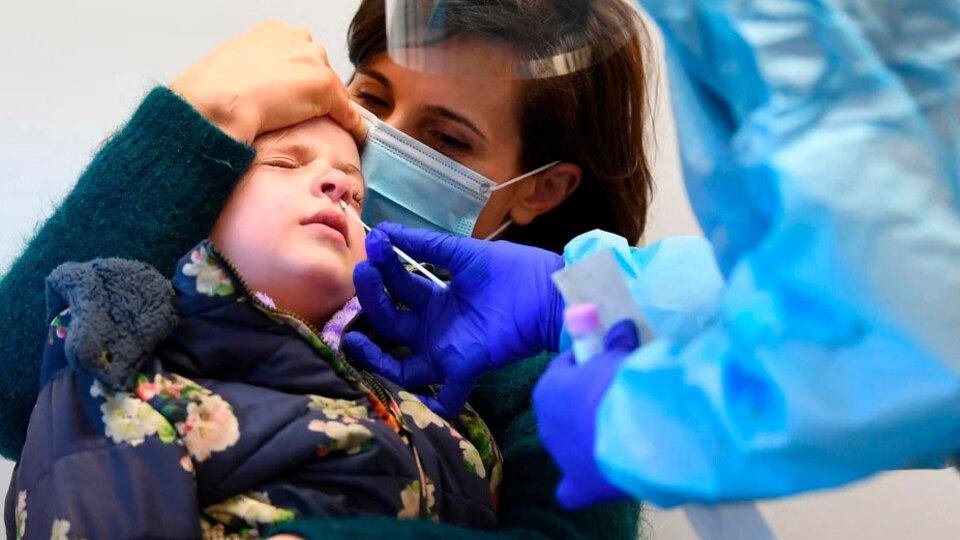
[ad_1]
A strange disease affecting children and adolescents who have contracted coronavirus is alerting specialists around the world. It is multisystem inflammatory syndrome (MIS-C), which health professionals and researchers in the United States have said has presented itself more seriously in recent months, compared to cases detected during the first wave of the pandemic.
Symptoms of the syndrome may include fever, rash, red eyes, or gastrointestinal problems and can evolve to cause a heart dysfunction, including the cardiogenic shock, in which the heart cannot compress enough to pump blood. Some patients have developed cardiomyopathy, which stiffens the heart muscle or arrhythmia.
Roberta DeBiasi, director of infectious diseases at the National Children’s Hospital in Washington DC, said that in recent times they “are getting more children with MIS-C” and “it seems a higher percentage of them are quite serious”. While during the first wave of the pandemic, half of children and adolescents with this syndrome needed an intensive care unit, in this new wave, that group is between 80 and 90 percent.
The reasons, said the specialist, are unclear. One possibility, he stressed in this regard, is that the increase in severe cases is linked to higher number of infections which was last recorded in the United States, as the country had a peak in coronavirus infections after the winter break. Although the fear of new variants It is also on the table, experts said there is no evidence in this regard and “it is still too early to speculate”.
According to the most recent figures from the United States Centers for Disease Control and Prevention – the record goes through December and marks an increase since October – this syndrome affected 2,060 children and adolescents in 48 states, Puerto Rico and the District of Columbia, and caused 30 dead. Although the average age was 9, it has been detected in babies and even 20-year-olds.
The problem, noted medical director of pediatric heart transplants and advanced heart failure at Children’s Hospital & Medical Center in Omaha, Nebraska, Jean Ballweg, is that the scope of this syndrome is unknown: “in fact we don’t know what will happen in the long run“, He admitted.
His hospital, Ballweg said, was treating two cases per month between April and October (30% of them in the intensive care unit), ten cases in December and twelve in January (60% needed care in the intensive care unit). intensive care, with ventilators). “Obviously it looks like they’re sicker,” he lamented.
According to doctors in the United States consulted by the New York Times, most patients test positive for anti-covid-19 antibodies, which indicates a previous infection, although there are many more that also test positive for active infection.
Until now, It has not been possible to determine which factors predispose to the syndrome. Jane Newburger, associate chief of academic affairs in the cardiology department at Boston Children’s Hospital, is leading a national study and said patients with obesity and some older children look worse.
69% of the reported cases have been in young Latinos or blacks, so specialists believe this is due to socio-economic and other factors that have disproportionately exposed these communities to the virus. However, said Ballweg, the hospital in Omaha that originally housed children of Latino mothers and fathers who worked in meat packing factories “is now seeing the arrival of a much broader spectrum that includes all ethnicities “.
Some health professionals have assured that effective treatments are applied which, in addition to steroids, immunoglobulins and anticoagulants, May include medicines for blood pressure, an immunomodulator called anakinra, and supplemental oxygen.
Some cases
Braden Wilson, 15, was scared of COVID-19. He took care to wear face masks and only left his home in Simi Valley, Calif., For his appointments with the orthodontist and his visits to his grandparents who lived nearby. ” New York Times article.
However, the virus reached Braden and inflicted “ruthless damage in the form of inflammatory syndrome”. Doctors at Children’s Hospital in Los Angeles put the teenager on a ventilator and cardiopulmonary bypass machine, but couldn’t prevent his major organs from deteriorating.
On January 5, they finally “officially declared that he was brain dead,” said his mother, Amanda Wilson, between two sobs. “My son was gone.
Jude Knott, 4, was hospitalized in Omaha for 10 days after developing headaches, fever, vomiting, red eyes and a rapid heartbeat. “It was a roller coaster ride,” said her mother, Ashley Knott, a professional trainer at an Omaha nonprofit that helps low-income teens.
To explain to Jude the intravenous immunoglobulin infusions the doctors were giving him, he told him that they “put ninjas in your blood so they can fight. For the blood thinner injections, which the boy hated, he said, “” Champion, they run your blood from milkshake to water because we need it to be water. “I would say anything to him to help him understand.
Jude recently returned to daycare full time. He has a dilated coronary artery, but it’s getting better, his mother says.
.
[ad_2]
Source link
 Naaju Breaking News, Live Updates, Latest Headlines, Viral News, Top Stories, Trending Topics, Videos
Naaju Breaking News, Live Updates, Latest Headlines, Viral News, Top Stories, Trending Topics, Videos